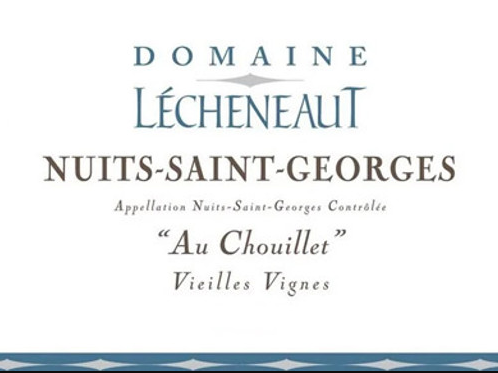There are few Burgundian houses that have such a profound reach across the depth and breadth of Burgundy as Jadot. The original estate began in the 1820s when its namesake, Louis Jadot, purchases the vineyard of Beaune Clos des Ursules (still a core part of their consequential range today). The Jadot family sold the business in 1985 to their US importer who, along with President Pierre-Henri Gagey, have overseen further upwards shift in both quality and fortunes. It is hardly a coincidence that the last twenty years have also seen a return to traditional farming, rejecting the use of chemicals in the vineyards, and gentler extraction and fermentation techniques in the cellars, now under the stewardship of winemaker Frédéric Barnier.
Overall, over 200 different wines are produced, from humble Mâconnais to the Grand Crus Chevalier-Montrachet Les Demoiselles and Musigny. Just as remarkable is the amount of vineyard land that they own and/or control – over 200 hectares – something that is impressive for any region, but noticeably so where the average vineyard holding is approximately 2.5 hectares.
While the Regional and Villages wines can offer excellent value, it is with the Premier and Grand Crus that the interest really lies. With that in mind, after our two visits to the estate this year, we are delighted to release our first Jadot allocation of six Premier and five Grand Crus. 11 of these are from Jadot’s own vineyards: Domaine des Héritiers Louis Jadot (the original holdings from when Louis Jadot first established the company), Domaine Louis Jadot and Domaine Gagey. The particularly impressive Vosne-Romanée Les Suchots was vinified from grapes purchased from a leading grower.
Domaine Louis Jadot, Chassagne-Montrachet Premier Cru Abbaye de Morgeot 2014
£195 per six bottles in bond
Premier Cru Abbaye de Morgeot is a lieu dit – or single vineyard to the south of Chassagne-Montrachet, around a 12th Century abbey. Its wines, in scant supply due to the small size of the vineyard, display a particular mineral vein, reflecting the limestone and clay soils. Its gentle slope faces southeast, providing a welcome compromise between the very rich style of wines that face further south and the leaner style of easterly-facing vineyards. The 2014 already shows lively aromas of citrus and jasmine, and a hint of spice on the nose. A gentle thread of acid lifts the palate meaning overall this is an impeccably balanced wine with subtle oak. A pleasure to drink from the off, this has the citrus and stone fruit intensity to last 8 or 9 years. We preferred the Abbaye de Morgeot to the wine from the estate’s leased vineyard close by, the Clos de la Chapelle. Drink 2017-2023
Domaine des Héritiers Louis Jadot, Puligny-Montrachet Premier Cru Folatières 2014
£230 per six bottles in bond
Folatières is one of the most fascinating vineyards of Puligny-Montrachet: despite its size, with over 17 hectares of vines on particularly stony soils, it remains one of the consistently great sources of Puligny-Montrachet that we’ve tasted. The Chevalier-Montrachet Grand Cru notwithstanding, this was the finest white we tasted at the domaine, who have just 0.25 hectares from their original holding. An extrovert in character, the 2014 has huge aromatic intensity of lemon and honey on the nose followed by the classic, tightly-woven acidity and citrus fruit on the palate. Not a wine for the impatient, the firm structure will ensure ageing and keeping for at least 10 years if required. Drink 2018-2026
Domaine Gagey, Beaune Premier Cru Grèves 2014
£120 per six bottles in bond
Beaune has a myriad of Premier Crus (42 in total) of which Grèves is one of the best-known. In part this is because it is the largest Cru, with over 30 hectares, although the quality of a several Grèves in the market have certainly contributed to its reputation. The name ‘Grèves’ refers to the small stones overlying richer red soils found there, which appear to confer the richness in the wines, yet never heaviness. The 2014 is vibrant with cherry and cranberry notes, and a touch of oak spice from approximately 16 months in barrel. The wine is medium in body but with a rich black and red fruit core that will ensure drinking relatively early. Nonetheless, the wines from this vineyard have continually proven the test of time, and the compact structure of this wine is no exception, at a remarkably modest price point, we might add. Drink 2016 to 2024
Domaine des Héritiers Louis Jadot, Beaune Premier Cru Clos des Ursules 2014
£185 per six bottles in bond
Beaune Premier Cru Clos des Ursules is the original vineyard (lying within the larger ‘Vignes Franches’ Cru) that the Jadot family farmed from 1826. It is also a ‘monopole’ vineyard, i.e. a vineyard that only Jadot own, farm and make the wines from, somewhat of an advantage in a region that is defined by its fractious nature and large number of vine growers. The Clos des Ursules is aged similarly to the Grèves, but underwent a longer fermentation of 5 weeks, with which winemaker Frédéric Bannier extracted deeper red colour and fruit aroma.
Clos des Urusules lies close to Pommard and shares the longevity of some of the more substantial Pommard Crus. The 2014 has dense tannins and persistent red fruit flavour that contributes to a powerful, full palate. It has the richness of Grèves but more concentration, which will in time lead to fascinating complexity and potential for ageing. Drink 2017 to 2027



